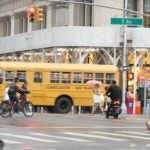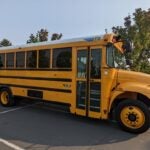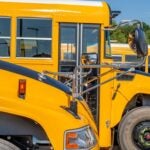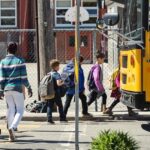Posts tagged with 'electric buses'
New research from WRI’s Electric School Bus Initiative and Carleton University shows that the U.S. would see an estimated $1.6 billion in health and climate benefits every year by using electric school buses. This estimate accounts for the cost to society of using diesel-burning school buses ...

The Miami-Dade County Public Schools district (M-DCPS) has plans to reach 100% clean energy by 2030. Electric school buses (ESBs) form a centerpiece of its broader sustainability strategy. As the seventh-most populous county in the U.S. and the fourth-largest public ...

Steve Easterday would start and end the school year with the windows open. In the fall and spring, when the weather turned temperate in central Tennessee, his passengers – Putnam County School students of all ages – would slide down ...

The electric vehicle (EV) market is showing steady growth in many parts of the world. In 2023, nearly one in five cars sold worldwide was electric, with China, Europe and the United States accounting for 95% of those sales. In ...

In cities around the world, people are embracing electric buses, which provide a quieter, smoother ride without the harmful pollution from traditional gas and diesel buses. For example, bus riders in Pune, India, will skip boarding a diesel bus to wait for an electric ...

Imagine living in a country where everyone has access to clean, affordable public transportation to reach their jobs, schools and healthcare needs without relying on polluting fossil fuels. That vision isn’t too far from where India hopes to be by ...

The field of electric school bus (ESB) vehicle to grid (V2G) programs is rapidly evolving. The number of V2G programs across the U.S. continues to grow: At least 11 utilities and five states have enacted programs since we first examined the space ...

What does it take for cities to create a true systems change that creates a holistic, positive shift of the entire urban system? Finding and celebrating examples of this feat is at the heart of the WRI Ross Center Prize for Cities. Since ...

Transforming Transportation 2025 is in the books. After a year of geopolitical turmoil and escalating climate impacts, the transport sector is seeing rapid change on multiple fronts. Across two days of events, leaders in government, business, academia and civil society ...

Transport is one of the fastest-growing sources of greenhouse gas emissions, accounting for 24% of carbon emissions worldwide. Nearly three-quarters of those emissions come from road vehicles. Solutions like electrification and increased public transport can reduce the transport sector’s emissions, but they ...

The way we make and use energy is changing. With prices falling and technology more widely available, clean energy uptake is growing rapidly. Investment in new clean power now outpaces investment in fossil fuels. This represents tremendous progress — but affordable technology ...

Public transit is not only a vital network connecting people to jobs, services and one another; it’s also an important climate solution. The world needs to double public transit capacity by 2030 as part of its larger roadmap to slash planet-warming emissions ...

2024 has been a tumultuous year: More than half the world’s population went to the ballot box — some voting for radical change — extraordinary weather events have devastated communities and countries have been rocked by continued violent conflict. Given ...

Editor’s Note: This article was updated with new findings as of October 2024 from WRI’s Electric School Bus Data Dashboard, which is updated monthly and contains the most recent data on electric school bus adoption. Previous versions of this article are ...

Cities are home to more than half the world’s population: 4.4 billion people commuting, working, eating, shopping, and using light, heat and air conditioning. As a result, cities collectively produce over 70% of the greenhouse gas (GHG) emissions warming the planet. They ...


























